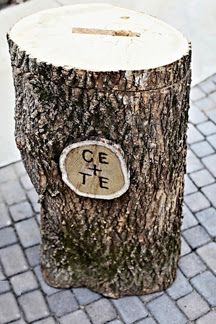It's kind of strange that I have been writing on this blog for over 6 months about medieval weddings but I haven't mentioned the actual ceremony yet, so here it comes.
The Middle Ages was a long period and therefore the cermonial part of the wedding probably changed some over time. The church had great power but it took some time for the Christian ways to beat the older tradtions and form into that solidified ritual we know today.
From what I can gather the medieval ceremony was a very undefined thing. They only thing that was required for a marriage to be legally binding was consent between man and wife followed sooner or later by sex. A secret runaway wedding in the forest without a priest was as binding as the formal one where all guests gathered as witnesses.
The church did prefere the ceremonies involving a priest as it was easier if the couple wanted an annulment when there had been no priest or family there to witness that it actually took place. And divorce was a sin at the time.
In the late Medieval Times the common way to have a ceremony was to walk with all the guests up to the church. Outside the church the couple would declare their consent and the priest would bless their union. Then everyone would go inside and attend mass.
 |
| From Facta et dicta memorabilia - second quarter of the 15th century |
In Denmark a wedding is called "
Bryllup" which derives from the old word
Brudhlaup which means: Bridal run. It comes from a tradition where the entire wedding party would walk through the city in a procession. I am not certain if this was a demonstration of the magnitude of the wedding or simply a way to celebrate.
If you want a ceremony that's medieval you can almost make up want you want as there was no specific rules as to how it should be. If you prefere an outdoor wedding it will be as accurate as a wedding in a church. We have some litterary sources of the cermoniel words dating back to the renaissance that probably derives from medieval ceremonies.
If you want to read a little more my source was this
article by Sharon L. Krossa
































